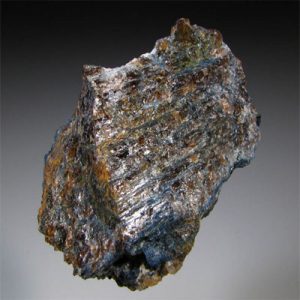Sarcopside
Sarcopside is a phosphate mineral of manganese, magnesium, and iron. It was named in 1868 by Christian Friedrich Martin Websky from the Greek words sarka, for flesh and opsism for view alluding to the flesh-red color observed on fresh fracture surfaces. Sarcopside is typically formed along with Graftonite, probably by exsolution from Triphylite, in complex zoned granite pegmatites. Sarcopside is not your normal gem-type mineral, more for the collector of the rare and unusual. The main source for “facet-grade” material could be Berg, Sollefteå, Ångermanland, Sweden. This material is a deep reddish brown with resinous to waxy luster.
Locations for finding : From Góry Sowie (Michelsdorf), in the Eulengebirge, Silesia, Poland. At Otov and Domažlice, Czech Republic. From the Norrö pegmatite, on Rånö Island, and in the Berg quarry, near Sollefteå, Västerbotten, Sweden. At Hagendorf, Bavaria, Germany. In the USA, in New Hampshire, at the Gingrass Farm, near Deering, Hillsboro County, in the G.E. Smith mine, Newport, Sullivan County, and from the DeMott and French King No. 2 mines, East Alstead, Cheshire County; in South Dakota, at the Bull Moose and Victory mines, and the Lofton prospect, near Custer, Custer County From the Énio pegmatite mine, northeast of Galiléia, Minas Gerais, Brazil. In the Tsaobismund pegmatite, 60 km south of Karibib, Namibia.
| Chemical Formula: | (Fe2+,Mn2+,Mg)3(PO4)2 |
| Iron Manganese Magnesium Phosphate | |
| Emperical Chemical Formula: | Fe2+2.4Mn2+0.3Mg0.3(PO4)1.9 |
| Molecular Weight: | 338.25 gm |
| Composition: | Magnesium | 2.16 % | Mg | 3.57 % | MgO |
| Manganese | 4.87 % | Mn | 6.29 % | MnO | |
| Iron | 39.63 % | Fe | 50.98 % | FeO | |
| Phosphorus | 17.40 % | P | 39.87 % | P2O5 | |
| Oxygen | 35.95 % | O | |||
| 100.00 % | 100.71 % |
| Crystallography: | Monoclinic – Prismatic |
| Crystal Habit: | Fibrous, to 1 mm, more commonly platy or lamellar, in veinlets in oriented intergrowth with graftonite or triphylite. |
| Twinning: | Polysynthetic on {001}, common |
| Cleavage: | Good on {100}and {001}; poor on {010}. Distinct on a plane approximately perpendicular to the fibers, and another less distinct parallel to the fiber lenght (=[001] – ?). |
| Fracture: | Splintery to fibrous |
| Tenacity: | Brittle |
| Moh’s Hardness: | 4.0 |
| Density: | 3.64 – 3.73 (g/cm3) |
| Luminescence: | None |
| Radioactivity: | Not Radioactive |
| Color: | Gray-pink, red-brown, brown (slightly altered), blue, lavender, green; flesh-red in transmitted light, rarely white. |
| Transparency: | Translucent to opaque |
| Luster: | Resinous, silky to waxy |
| Refractive Index: | 1.670 – 1.734 Biaxial ( – ) |
| Birefringence: | 0.060 |
| Dispersion: | Perceptible; r > v |
| Pleochroism: | n/a |


